Edogawa Craft Stories

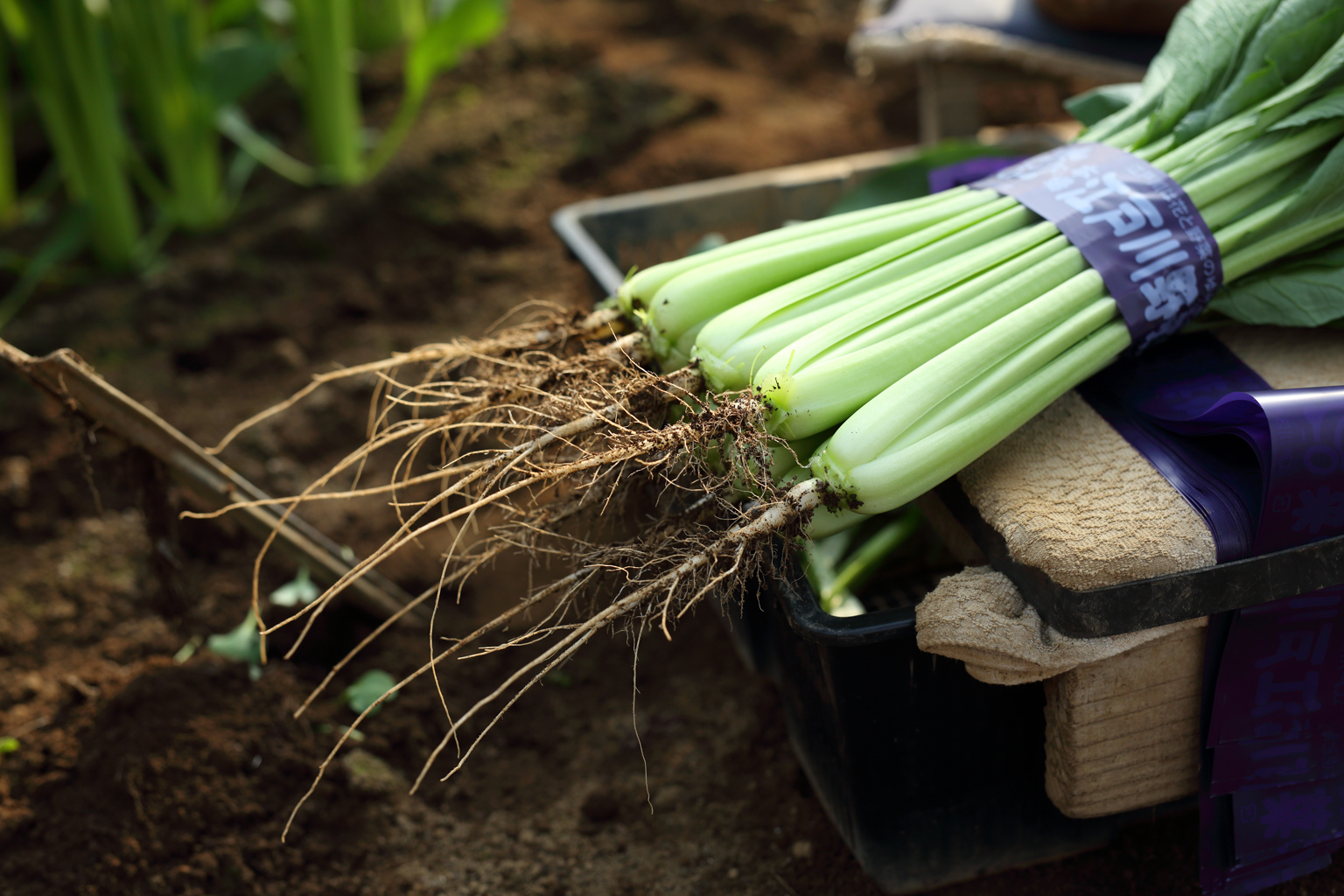
Komatsuna: Protecting and Cultivating a Local Legacy in the Edogawa’s Urban Farms
Komatsuna
K&K Farm
Kohara Farm, Kohara Hideyuki
Kadokura Farm, Kadokura Shuji
Komatsuna, or Japanese mustard spinach, is a traditional leafy green native to Japan that traces its origins to Edogawa City. Legend has it that Tokugawa Yoshimune, the eighth shogun, visited the Komatsugawa area during the Edo period, sampled a local green vegetable, and named it after the region. Though much of Edogawa’s landscape has transformed from farmland to city streets, it remains one of Japan’s top komatsuna producers—thanks in part to farms like K&K Farm. This urban agricultural venture is led by two young farmers: Kadokura Shuji, sixth-generation head of Kadokura Farm, and Kohara Hideyuki, fourth-generation head of Kohara Farm. Together, they’re developing new cultivation techniques and marketing strategies to secure a future for this centuries-old crop.
K&K Farm is a joint operation between Kadokura Farm and Kohara Farm, both based in Edogawa City. Across approximately 0.5 hectares of greenhouse space, the two farms coordinate closely in both farming techniques and business management.
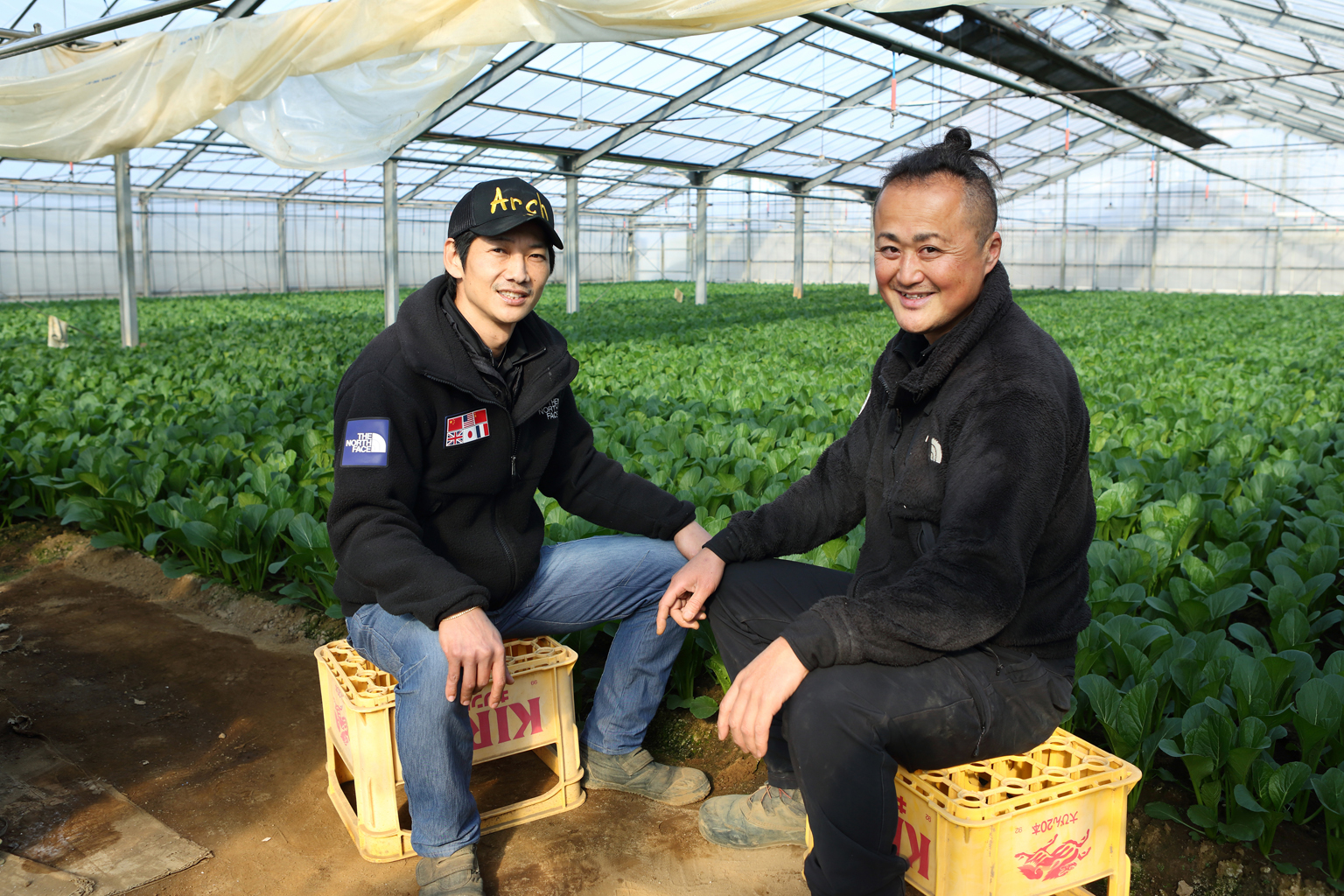
K&K Farm’s Kadokura Shuji (left) of Kadokura Farm and Kohara Hideyuki (right) of Kohara Farm.
A New Vision for Urban Agriculture, Built by Two Farmers
Kadokura and Kohara first met more than 15 years ago through a network of young local farmers. Their close collaboration began after they both won top prizes at an agricultural competition hosted by the Tokyo Metropolitan Government. A conversation on the train ride home sparked the idea to start working together.
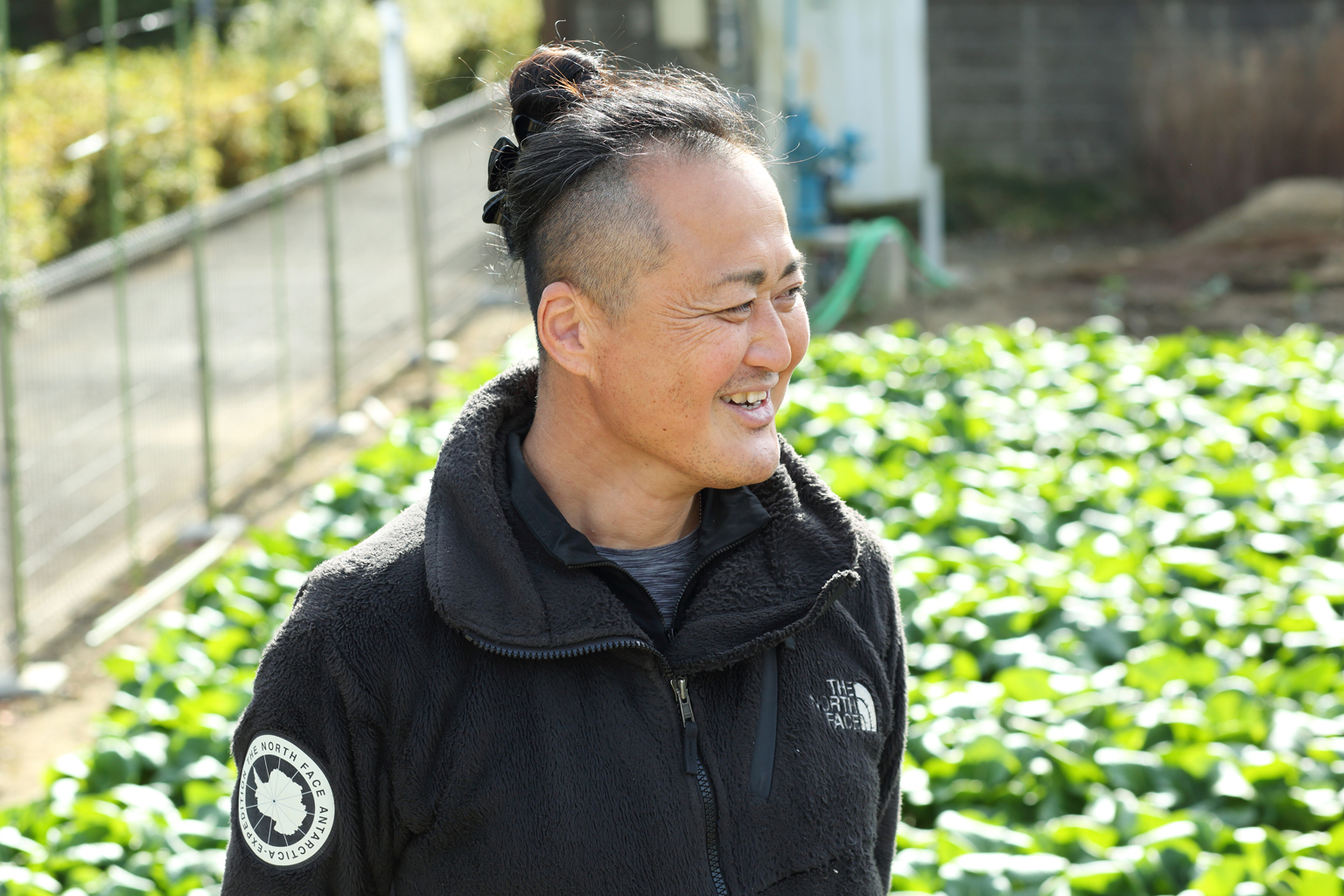
“I’d seen Kadokura Farm’s komatsuna in a high-end supermarket inside a Tokyo department store,” Kohara recalls. “I remember thinking, wow—how did they manage to get into a place like that?”
Kadokura, who comes from six generations of farmers, knew from kindergarten that he wanted to grow komatsuna. Kohara, too, declared in first grade that his dream was to take over his family’s farm. They shared a strong sense of mission: to find a way forward for urban agriculture, which faces issues like urbanization and a shrinking number of successors.
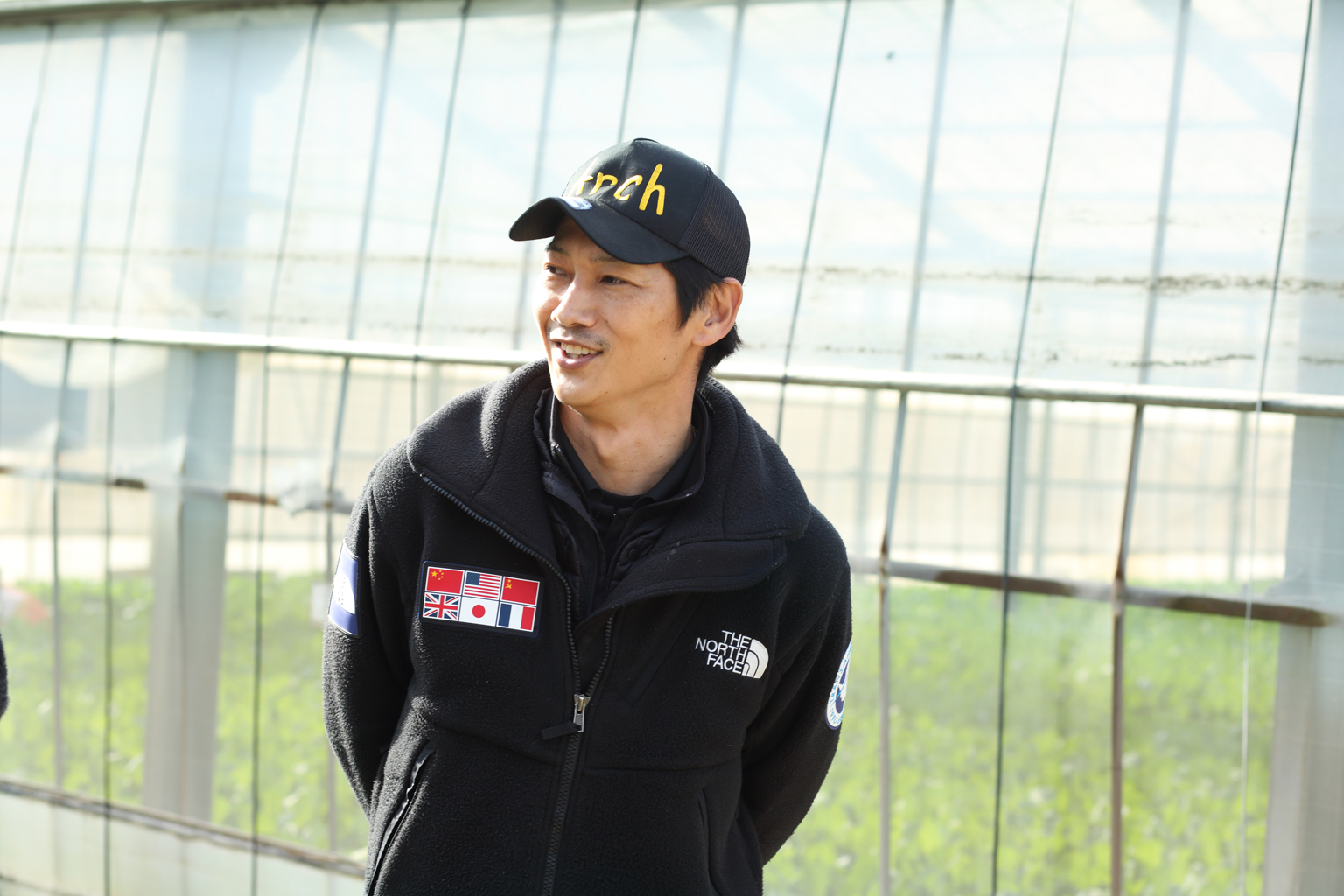
“Our personalities couldn’t be more different,” Kadokura says, “but it turns out we see eye-to-eye when it comes to farm management.”
Though both have inherited strong farming traditions, they each bring unique strengths. Kadokura, a former aspiring entertainer, has a natural flair for sales and handles distribution channels. Kohara, who studied agriculture at Tokyo University of Agriculture, excels at applying scientific insights to farming.
“There’s no point in arguing about who’s better,” Kadokura says. “We’re aiming for the same goal.” Kohara adds, “It’s not like our growing techniques are so perfect they need guarding.” Their mutual respect and openness to learning from each other has enabled them to move komatsuna cultivation forward as a true team.
Though they maintain separate farm operations, their collaboration deepened over time. In 2017, they began co-managing some aspects of the business. After facing the challenges of the COVID-19 pandemic together, they officially launched K&K Farm in 2020, taking their partnership to the next level.
Precise Cultivation Techniques for Steady Production
This interview took place at Kohara Farm in Harue-cho, Edogawa City. The moment we stepped into the greenhouse, we were met by the rich scent of soil and the vibrant green rows of komatsuna stretching out before us.
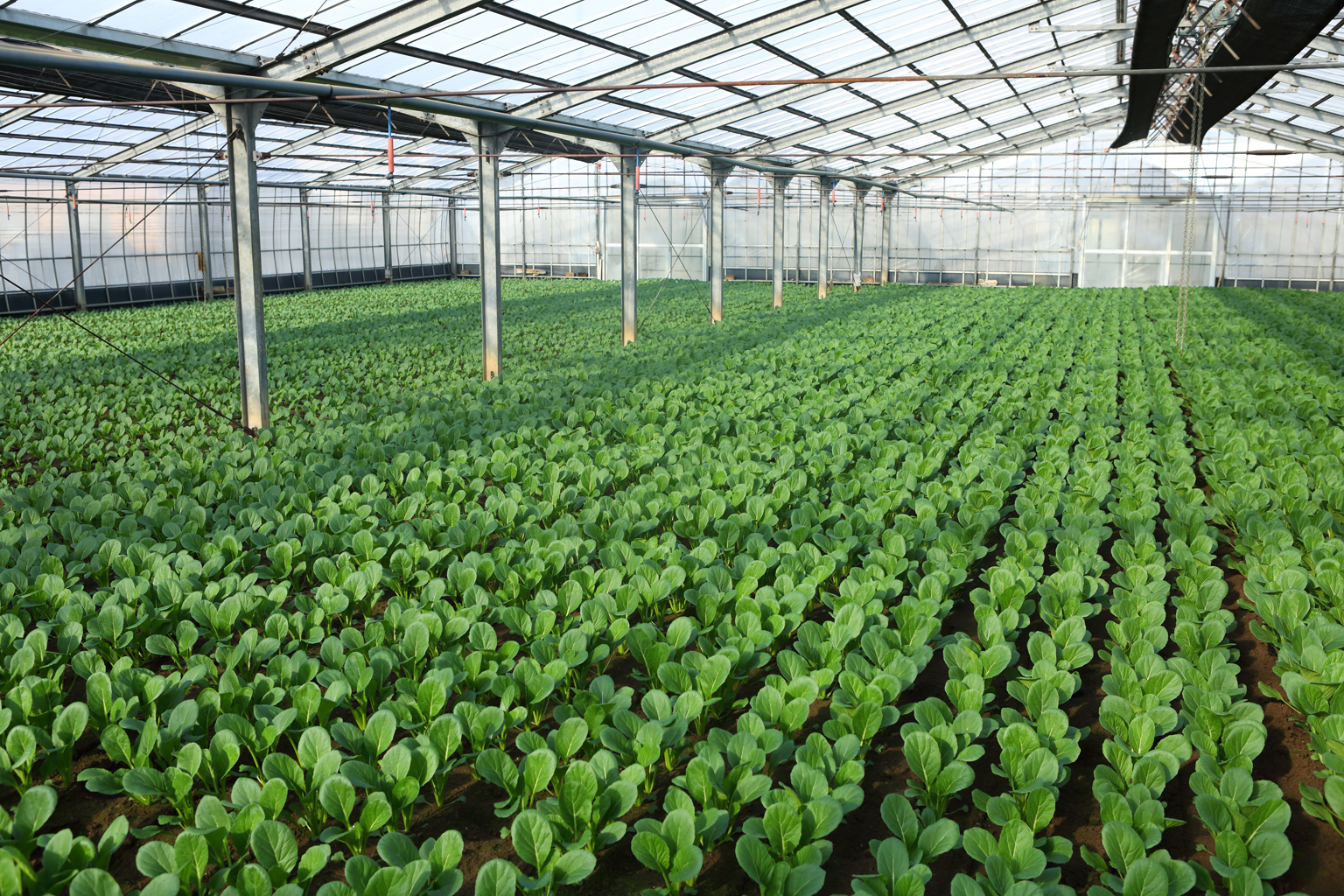
In peak growing season, a single greenhouse can yield up to one ton of komatsuna.
Several greenhouses are planted at staggered intervals—some lush with mature komatsuna ready for harvest, others with just-sprouted seedlings in freshly tilled soil. This rotation allows for consistent shipments throughout the year.
Kohara runs his hand through the earth to check its moisture. Even the most nutrient-rich soil won’t help unless nutrients are dissolved in water where roots can absorb them. Managing water levels amid today’s unpredictable weather—scorching heat, torrential rains—is no easy feat. Add in careful control of sunlight and temperature, and it becomes clear how delicate the process really is.
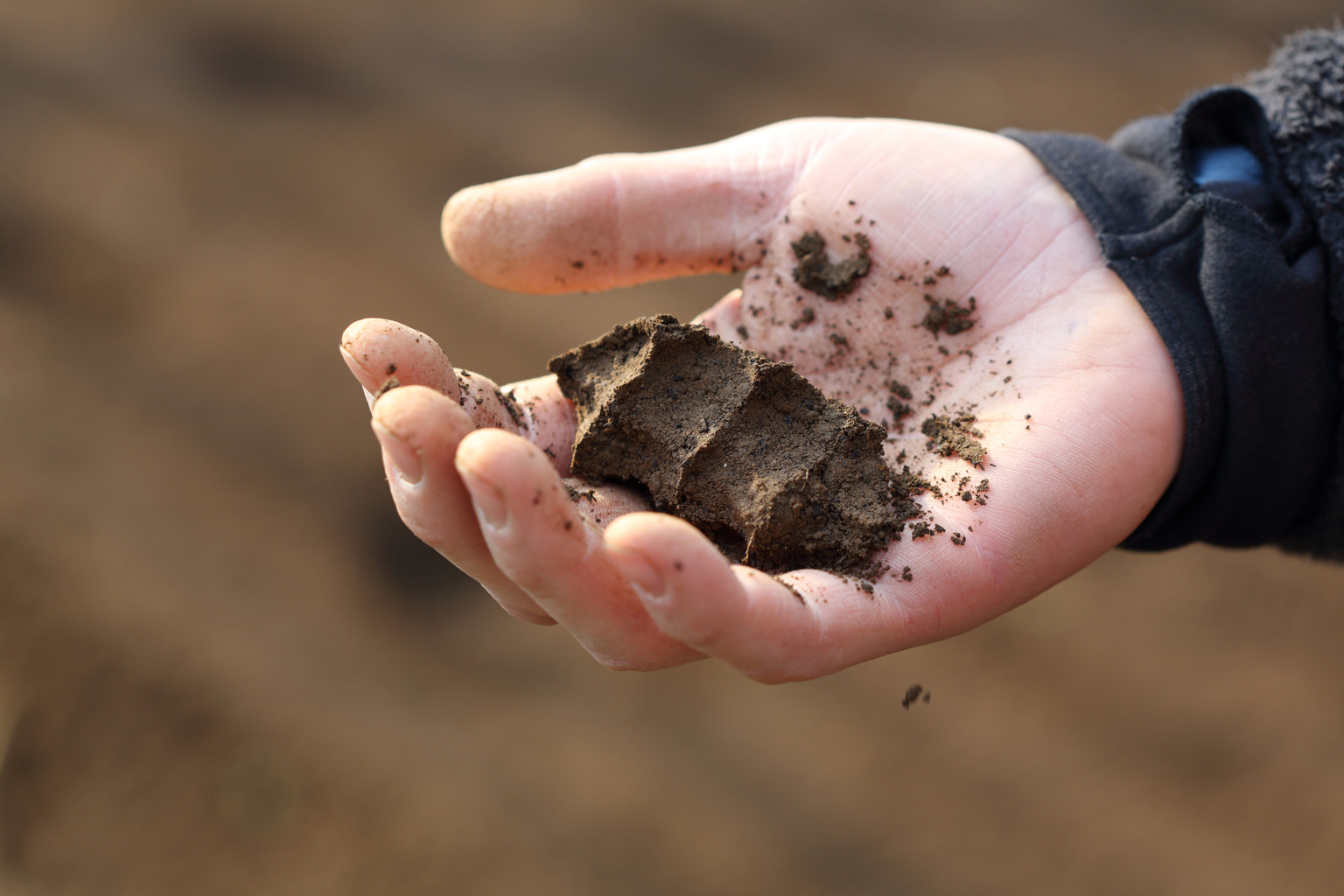
“Moisture is just right when the soil clumps in your hand without crumbling,” Kohara explains. In summer, they use sprinklers for two to three hours per session. But with extreme heat becoming the norm, they sometimes need to irrigate more frequently, using up to 50 tons of water per crop cycle.
“During the day, we give plenty of water and sunlight to encourage photosynthesis,” Kohara says. “At night, we keep greenhouse temperatures low so the plants don’t burn through all their nutrients. That rhythm is what makes our komatsuna so sweet and tender.”
Thanks to their data-driven fertilization and precise understanding of plant biology, K&K Farm’s komatsuna is rich in calcium and mild enough to eat raw. Their crops are also more uniform in size, which greatly improves harvesting and packaging efficiency.
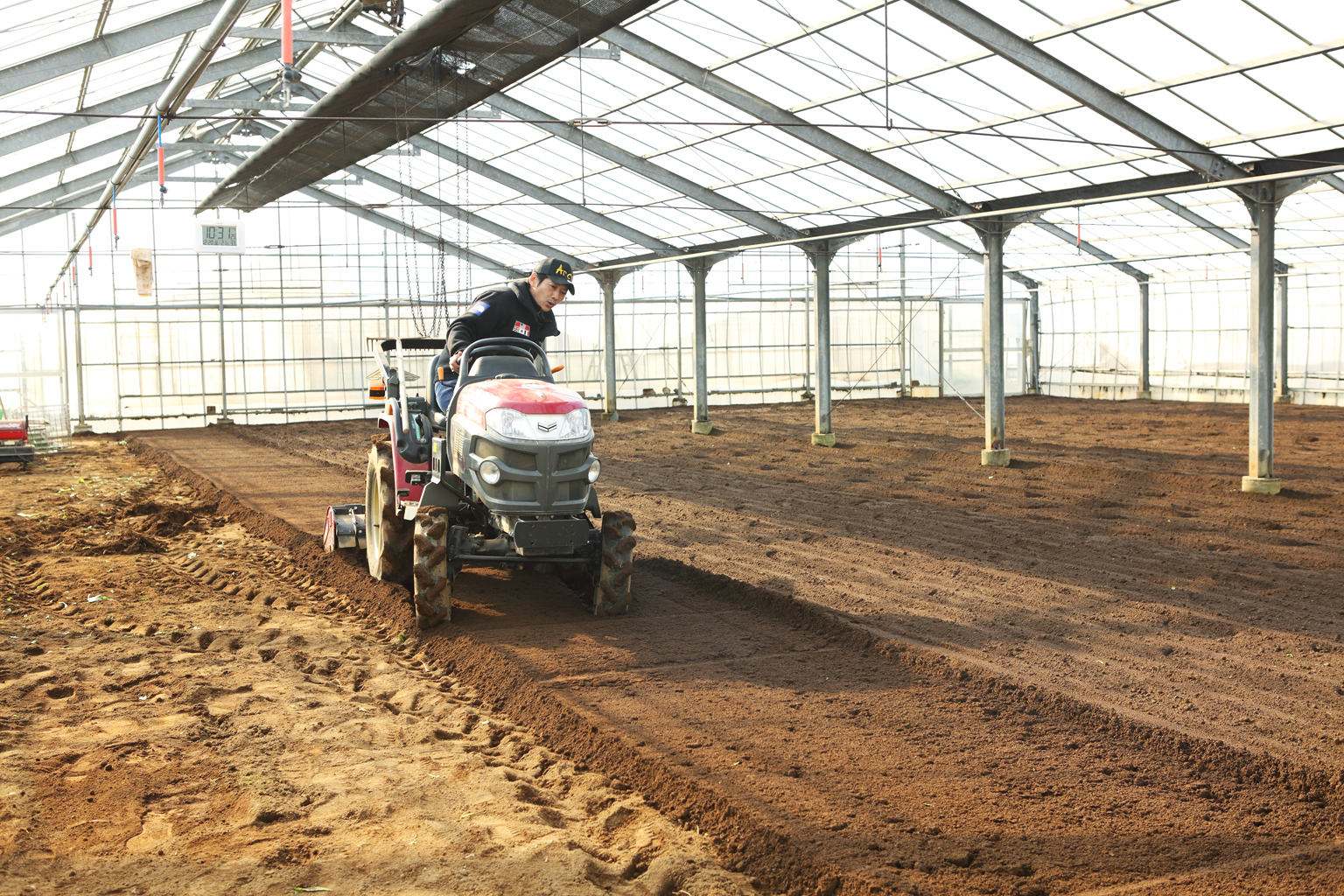
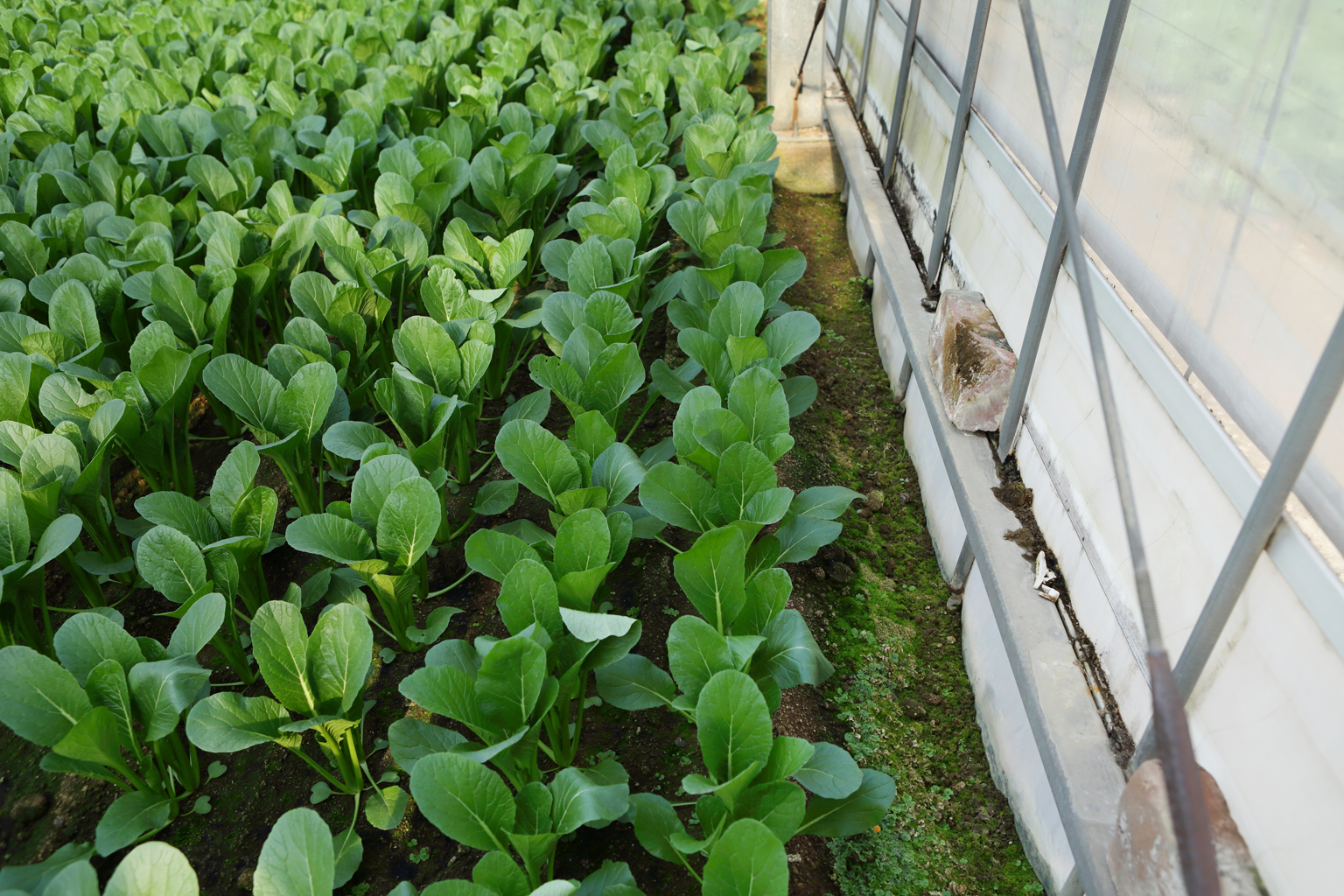
To make the most of every inch of urban farmland, they till right up to the edges. “A farmer out in the countryside wouldn’t bother tilling the very edge of the greenhouse,” Kadokura laughs.
With limited land available, maximizing productivity is critical. Their predecessors planted seven crops per year. Today, the two grow only four or five, yet their total harvest volume has increased.
“Our komatsuna is about 46 centimeters long, even after trimming the roots,” says Kohara. “That’s roughly double the size of the standard 25-centimeter bunch. Bigger plants take longer to grow, but they cut down on harvest time and boost yield per square meter. Plus, we only need half as many seeds.”
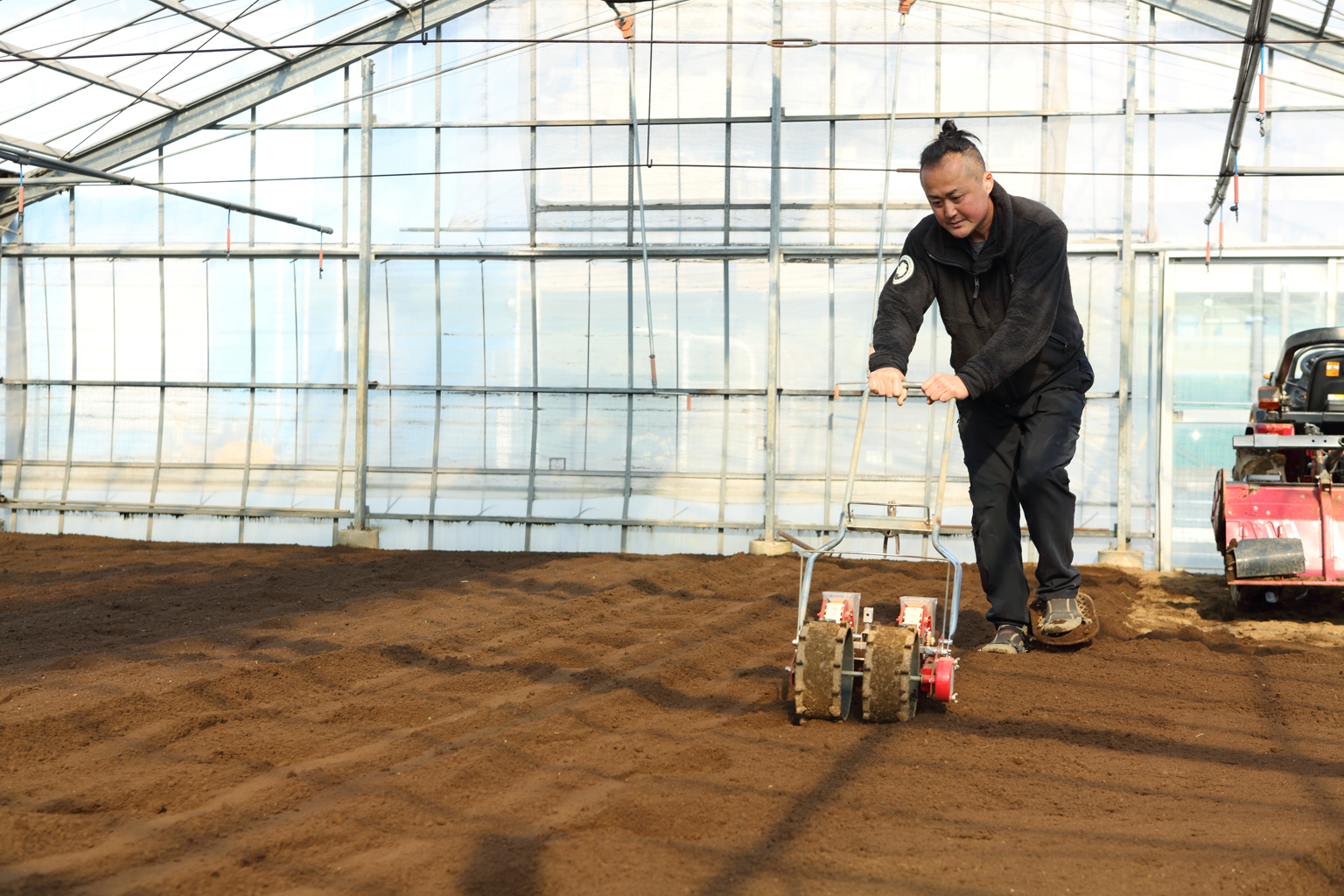
Kohara plants komatsuna using a seeding machine, ensuring even spacing. Because the soil is freshly tilled and soft, he wears traditional snowshoes called kanjiki to keep from sinking.
Their methods have caught the attention of multiple industries. Kohara has received the Minister of Agriculture, Forestry and Fisheries Award three times (2013, 2017, and 2022). Kadokura received the Tokyo Governor’s Award in 2017 and the Minister’s Award in 2023.
In 2024, K&K Farm was named Tokyo’s representative for the Japan Agriculture Award, winning the Tokyo Governor’s Award, NHK Director’s Award, and Central Union of Agricultural Cooperatives President’s Award. At the national competition, they earned the Special Award as representatives for Tokyo, a testament to their growing role in urban agriculture.
“What we do is simple: we take the growing techniques passed down through our families, identify what works, and cut out what doesn’t,” says Kadokura. “When testing things like seed varieties or pest control methods, we can run trials under different conditions at our two farms and compare results. That’s much more efficient than working solo; it’s how we generate real synergy.”
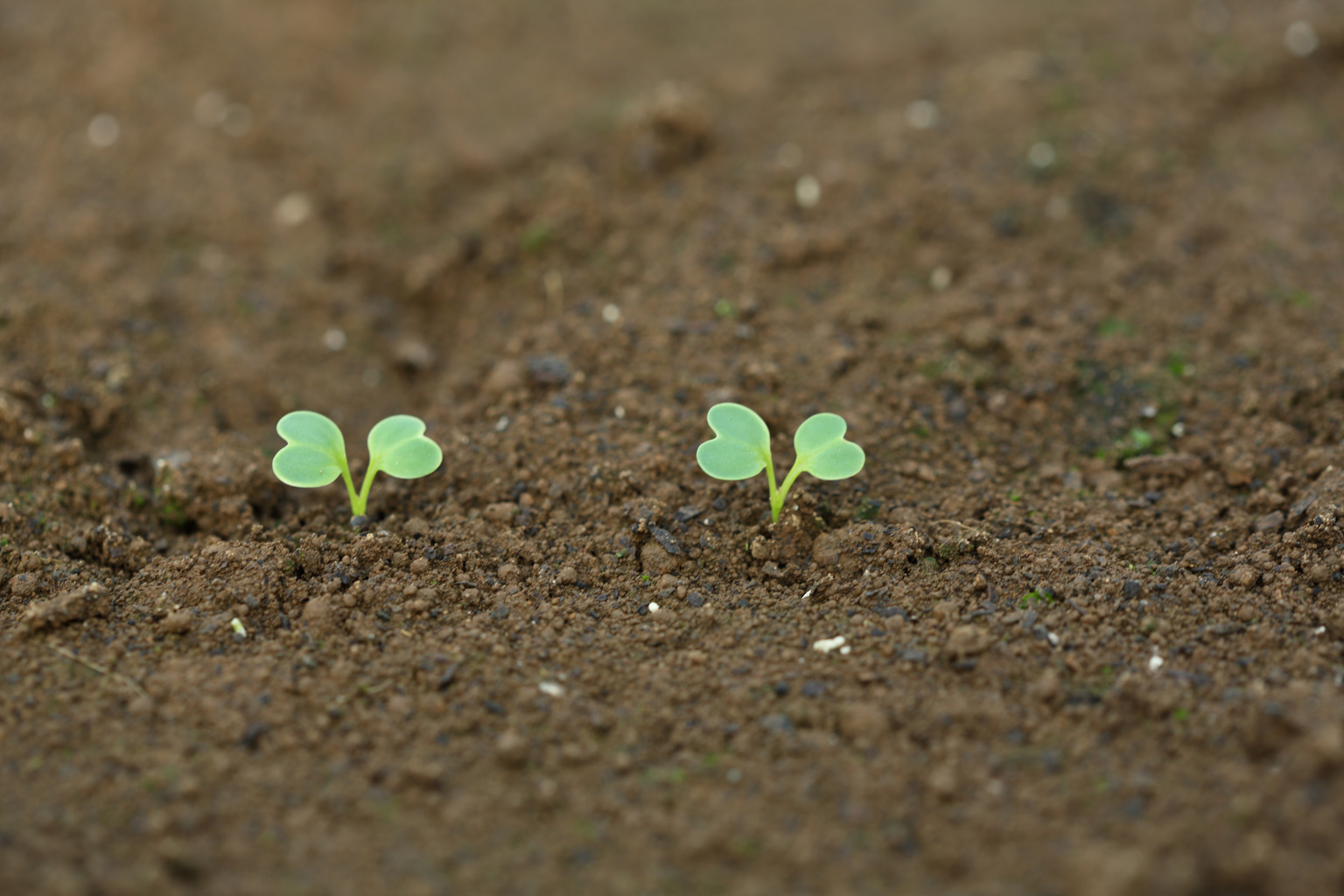
Freshly sprouted komatsuna seedlings. In summer, they reach maturity in about 35 days; in winter, it takes around 80 days to harvest.
Breaking the Mold and Pioneering New Distribution Channels
In the wholesale market system, prices fluctuate daily depending on the weather, temperature, and total market supply. Even the highest quality komatsuna can be undervalued when sold through conventional distribution routes. What sets K&K Farm apart is its proactive development of independent sales channels.
“When we relied solely on the market, we often felt our hard work wasn’t reflected in our earnings,” says Kadokura. “That’s when I thought, if I pitch our product directly, we might be able to sell at a price we’re happy with. So I started approaching upscale supermarkets. It wasn’t easy. I was turned down more times than I can count. But I kept telling myself, one day they’ll say they want Kadokura Farm’s komatsuna. That frustration became fuel.”
His persistence paid off. Today, Kadokura supplies directly to several department stores and premium grocers, with his komatsuna proudly displayed in-store.
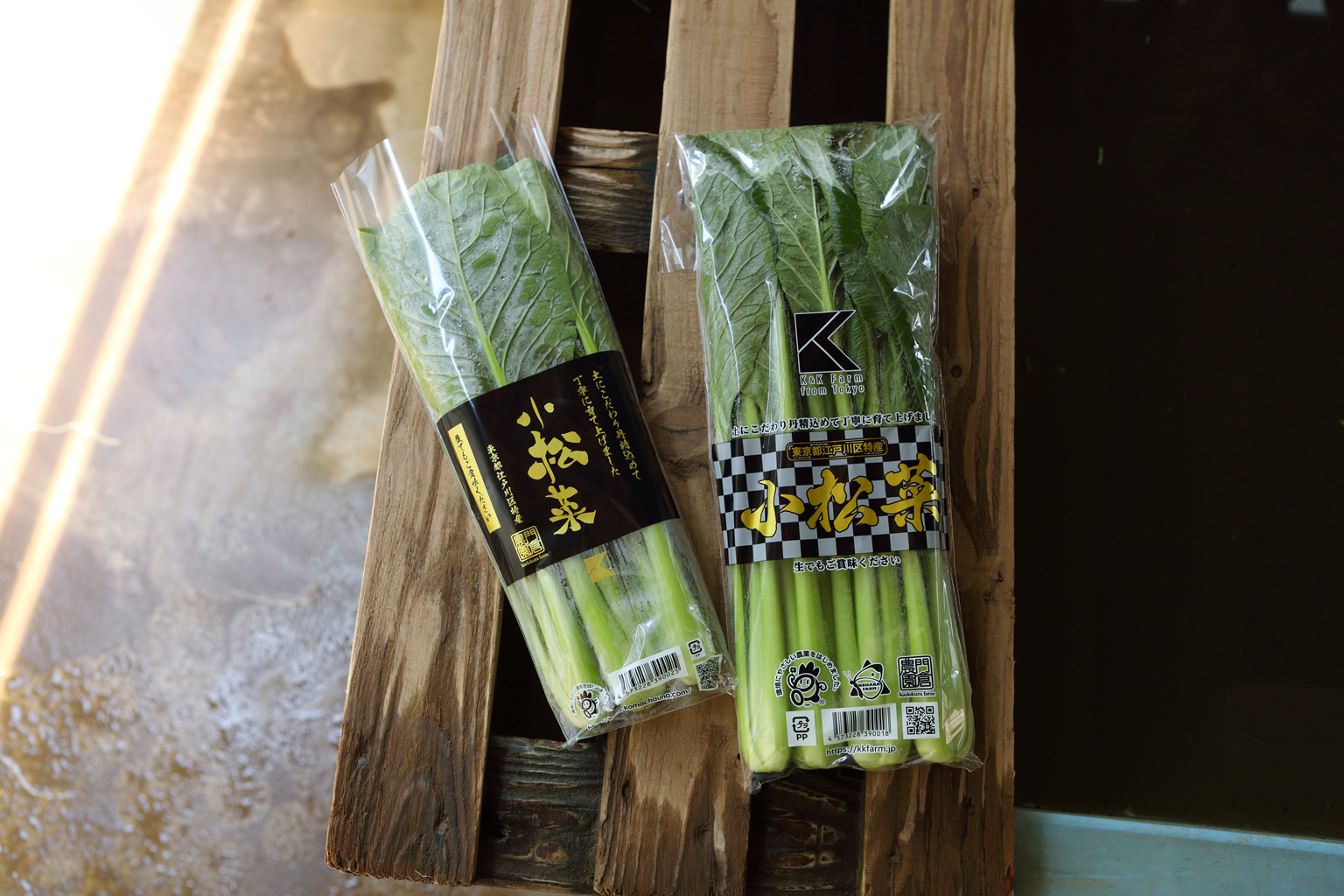
K&K Farm komatsuna, ready for retail. Each package features the K&K Farm logo. The sleek black wrapping on the left is a staple at high-end stores like Isetan.
Inspired by this success, Kohara built a sales route centered on school lunch programs across Tokyo’s 23 cities.
“By working closely with registered dietitians, we developed a system for delivering large, uniform bunches of komatsuna with high nutritional value—all optimized for easy processing in school kitchens. That’s where the idea for our signature large-sized komatsuna came from,” explains Kohara.
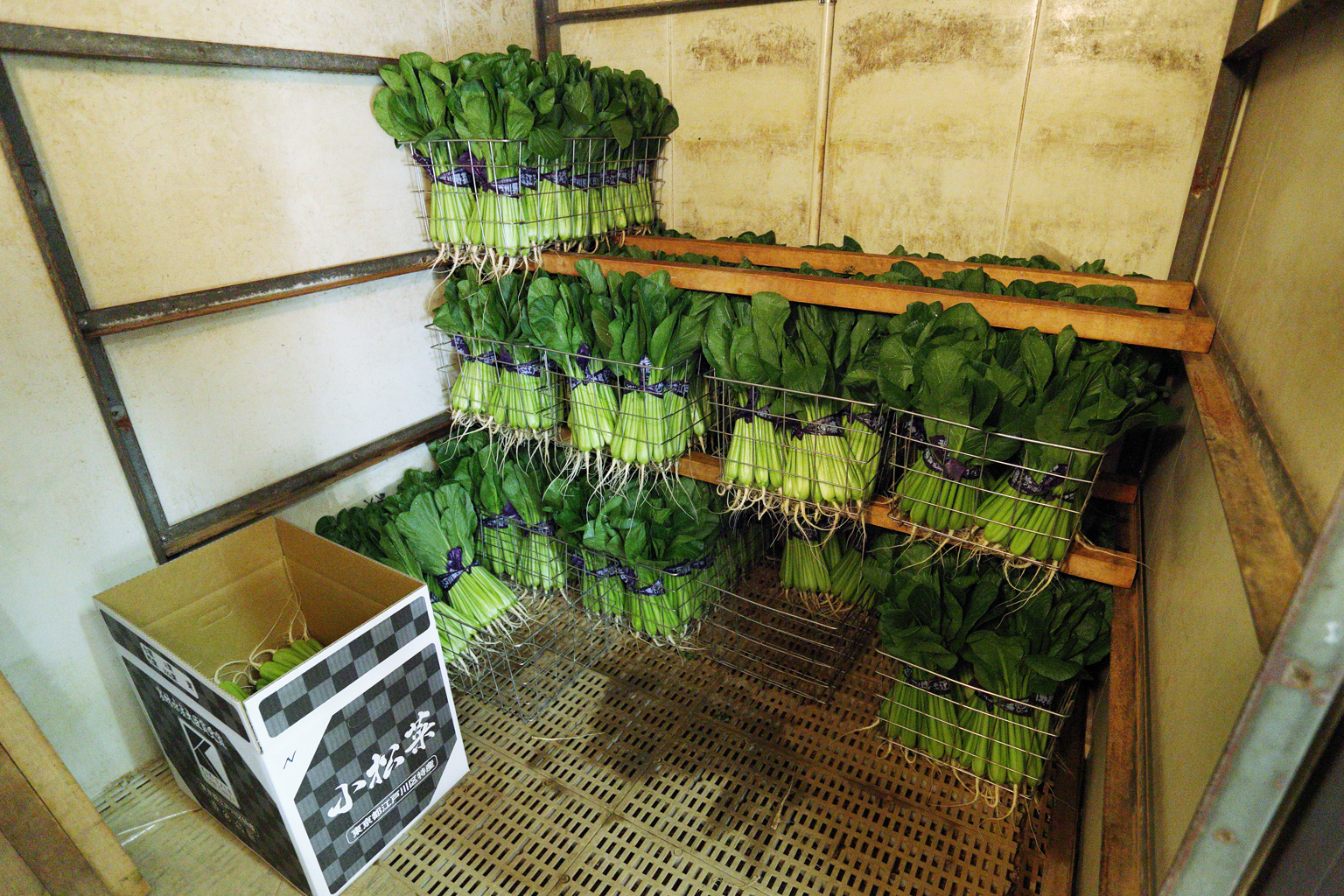
Komatsuna ready for shipment in Kohara Farm’s cold storage. To keep prep simple for school kitchens, the bunches are bundled with minimal packaging and still include the roots—unlike bagged varieties.
Cultivating the Future of Edogawa’s Farming Culture
Both farmers clearly remember their defining moment: the COVID-19 pandemic in 2020. “We couldn’t afford to stop now,” they say.
With school lunches halted and supermarket operations limited, their monthly shipments—five times the usual volume for a typical komatsuna farm—were suddenly at risk. Still, because they couldn’t predict when the situation would improve, planting had to continue. They pooled all available resources to keep going, seeking every possible outlet for their carefully cultivated komatsuna. The crisis cemented their bond, transforming a business partnership into something deeper and officially launching K&K Farm.
That bond continues to power new challenges. Even with steady productivity improvements, their combined land area of roughly 0.5 hectares can only be pushed so far. At most, they estimate a 1.2x increase in yield. Meanwhile, in Edogawa City, aging farmers and growing urban development are contributing to a gradual decline in farmland.
“We’re starting to think about agriculture on a broader, community-wide scale,” Kohara says. “We want to protect what our predecessors built, but we also have to adapt with the times. I think part of our job now is to carry Edogawa’s farming traditions forward in a way that fits today’s world.”
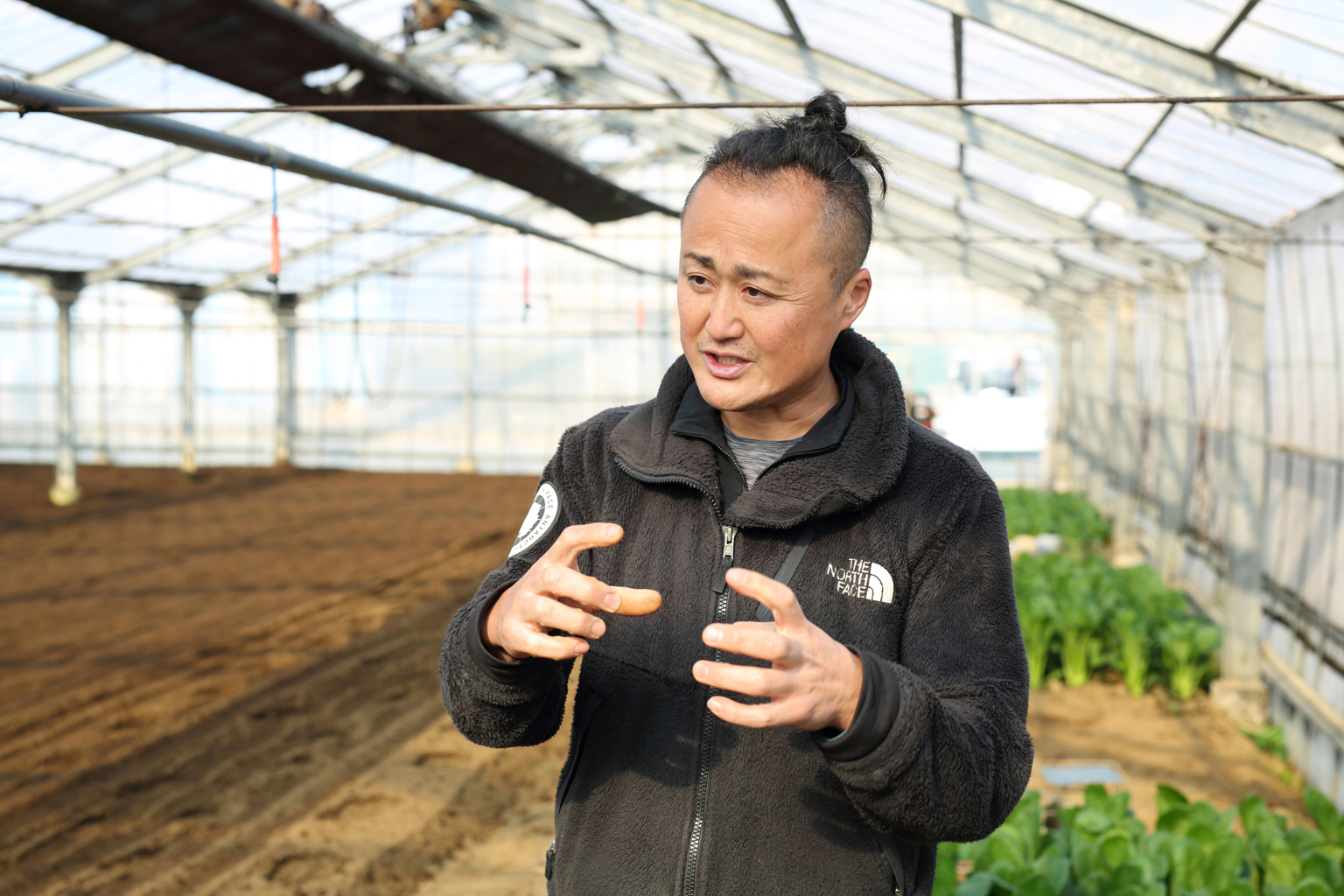
“There are young people who want to farm, but in Tokyo, it’s hard to secure land,” Kohara explains. “If we can take over some of that land, maintain it, and pass it—along with our techniques—on to the next generation, we’ll preserve the history of Edogawa-grown komatsuna, which so many before us cultivated with pride.”
In that spirit, they’ve begun assisting a local herb farmer with succession planning. It’s not just about business growth; it’s about exploring new forms of agriculture rooted in local tradition. They’re also leading community initiatives like food education through school lunches, farm tours, harvest events, and support for food banks—efforts to forge new connections through farming.
“I think we’ll see more exciting developments if young people feel inspired to farm here,” Kadokura says. “But for that to happen, we have to lead by example and show that success is possible. Just having the title of ‘birthplace’ isn’t enough—we need to grow komatsuna that really tastes great. Urban agriculture might be limited in space, but it’s right next to the consumers. If we can make a living off farming right here, we’ll prove that this path is viable.”
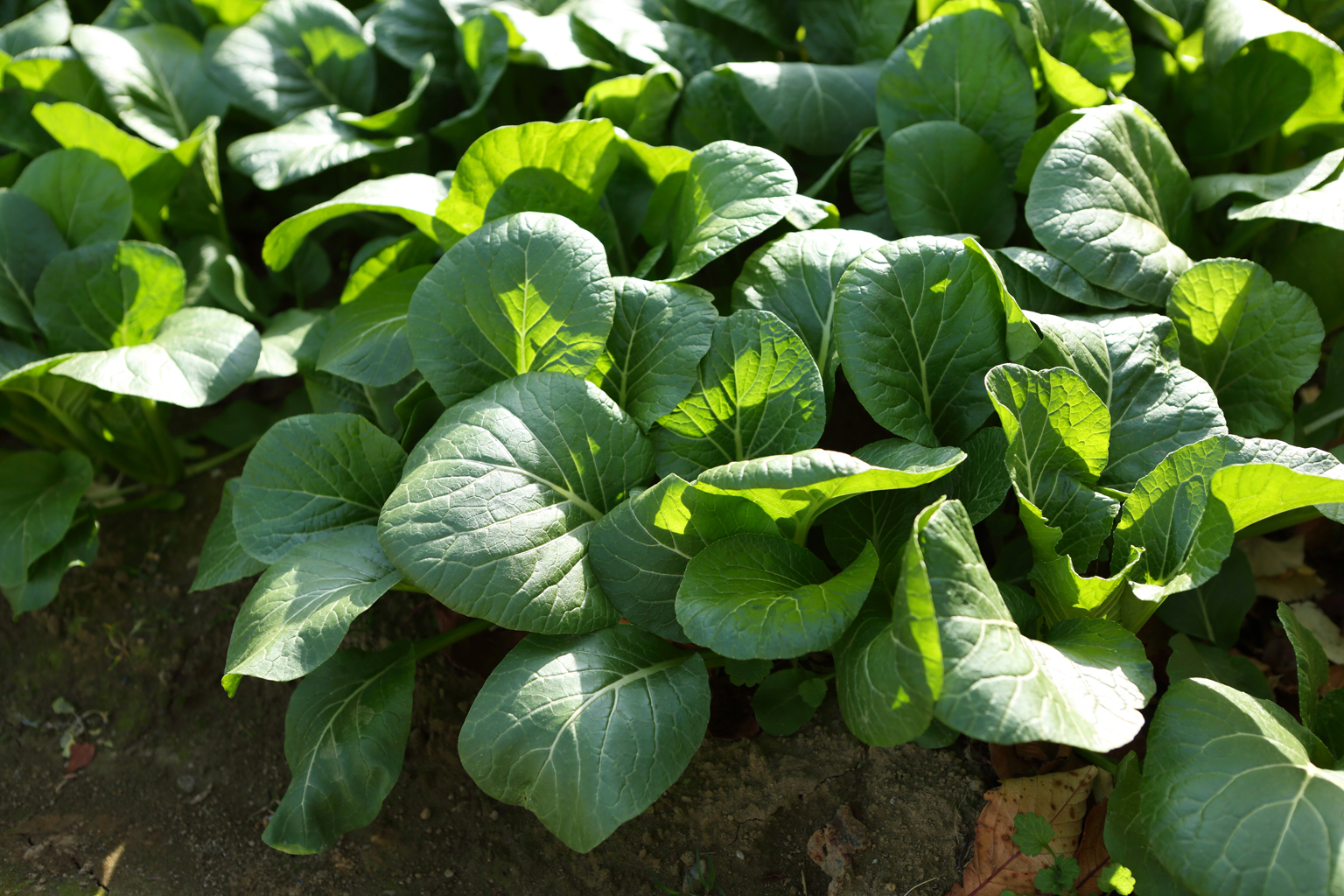
In one corner of the farm, an heirloom variety of komatsuna, unchanged by modern breeding, is still grown. “This is the original strain that we komatsuna farmers consider our starting point,” says Kohara.
Today, new seedlings will be sprouting again in the greenhouses. For over a century, Edogawa has passed down the art of growing komatsuna. Thanks to the hands of these two young farmers, that tradition is now firmly rooted in the future.
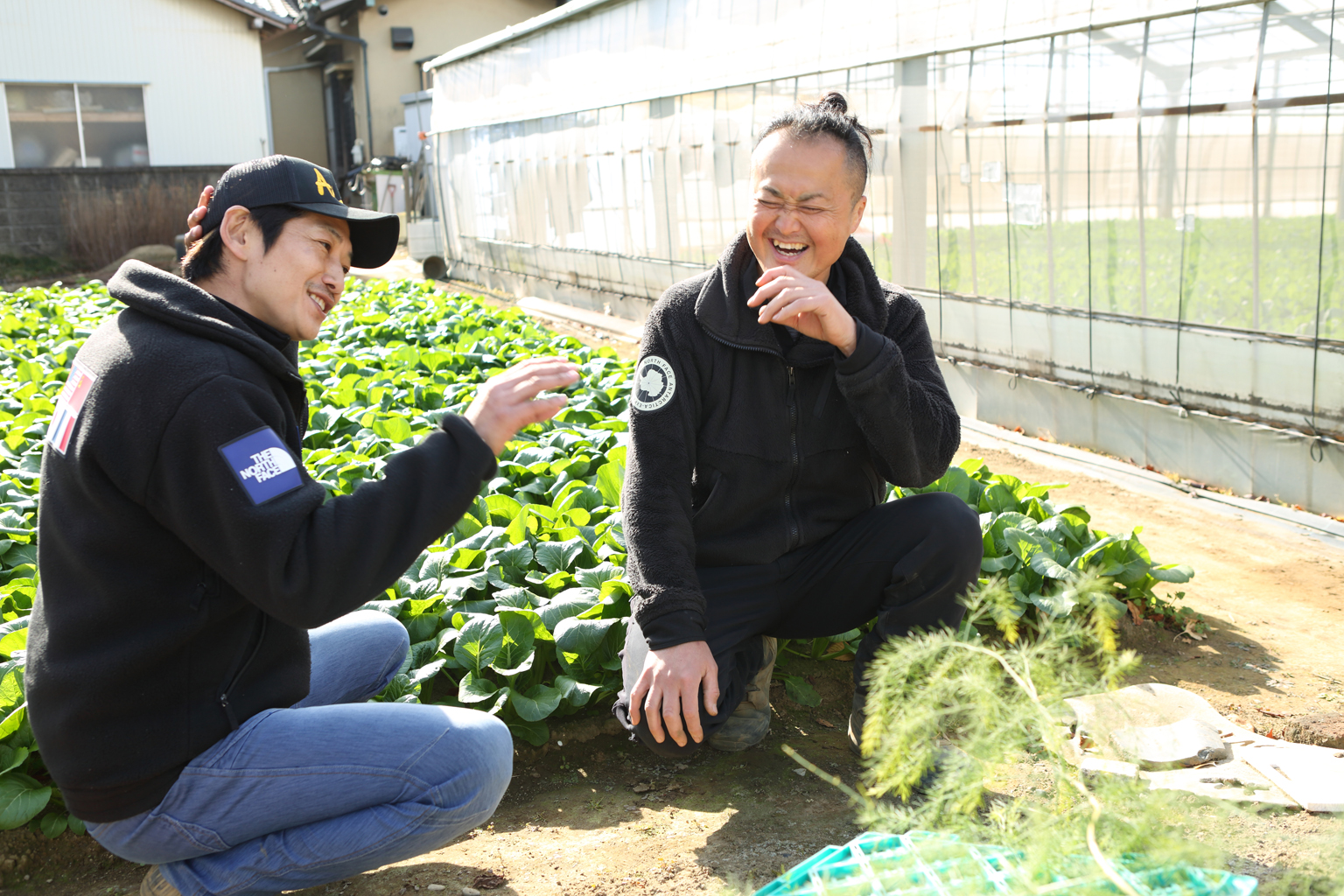
Writing: Kiuchi Aki
Photos: Takeshita Akiko
Introduction of the Artisan
A collaborative agricultural venture between Kohara and Kadokura Farms, both with generations of expertise in growing komatsuna (Japanese mustard spinach) in Edogawa City. In 2017, they began a partial business integration before officially launching K&K Farm as a joint operation in 2020. With a combined cultivation area of approximately 0.5 hectares, they specialize in contract farming for Tokyo’s school lunches and premium supermarkets. Their exceptional agricultural practices have earned prestigious accolades, including the Minister of Agriculture, Forestry and Fisheries Award, recognition as Tokyo’s representative for the Japan Agriculture Award, the Tokyo Governor’s Award, the NHK Director’s Award, and the Central Union of Agricultural Cooperatives President’s Award. In 2025, they proudly received the Special Award in the Group Organizations Category of the Japan Agriculture Award as the Tokyo.
・K&K Farm

